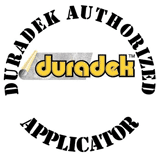What’s Behind The Bathroom Tile?
One of the most interesting service calls years ago was for loose tile in a master bathroom. The Doyle Brothers service technician arrived on the job to find what is fairly common in condominiums built between 1960 and 1985. During those years it was acceptable practice to use “moisture resistant” drywall material and face the “greenboard” with tile.
A word about “moisture resistant sheetrock,” first Sheetrock is a trade name for gypsum board, the 4 X 8 foot (and larger) sheets of material most commonly used for walls and ceilings. The moisture resistant variety has a green or blue paper covering over the gypsum instead of the general light gray type.
Moisture resistant drywall provided a nice custom tiled bathroom at a lower cost, but it provided no margin for error if moisture got past the grout. Well, that’s exactly what happened. The grout and caulk was allowed to deteriorate, the gypsum behind the paper acted like a sponge and began to crumble.
Now, typically one Doyle Brothers technician can make a complete 3 wall repair in two full days, plus 2 short visits to allow drying of joint compound and grout, but not this time. Carpenter Ants had infested practically every wall stud in the front and side wall. Imagine 2 X 4s that were literally 80% eaten but still dimensionally intact, Swiss cheese is the best analogy. I wish we had pictures. We did take a specimen about 18 inches in length to be encapsulated for posterity but the sample was damaged in the process.
Today, real concrete board is used as a trouble-free backing for tile. And, many newer materials such as molded acrylic is also available for new construction or to face right over older, unsightly showers that still retain their structural integrity.



